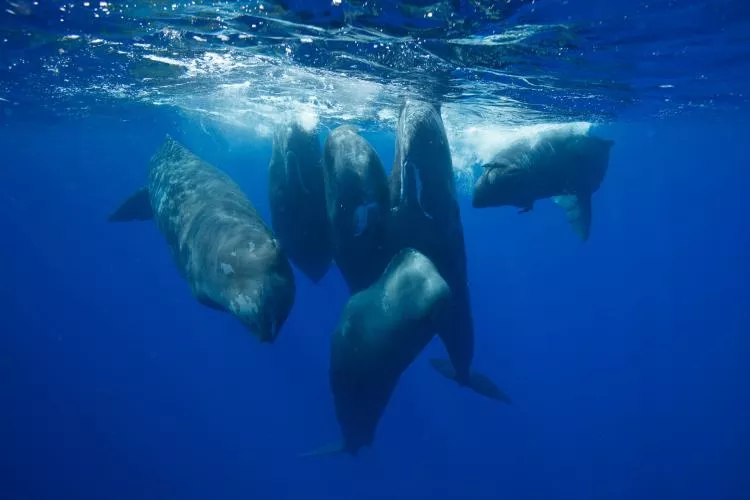Sperm whales form clans with diverse cultures
Sperm whales in the Pacific Ocean exhibit human-like patterns of symbolic cultural identifiers, a study suggests.
After studying more than 23,000 sperm whale vocalisations recorded from 1978 to 2017 in the Pacific Ocean, researchers have concluded that sperm whales use distinctive vocalisations to identify themselves with specific whale clans.
Called “identity codas,” these vocalisations comprise sequences of clicking sounds that distinguish different social groups. They are different from non-identity vocalisations used across all the different whale clans.
After analysing the vocalisations, researchers isolated specific identity codas used by each clan to distinguish themselves. Codas are passed on to the younger generation, which learn them by mimicking the adults in the clan. Codas remain consistent over the passage of time.
Co-author Mauricio Cantor, assistant professor in Oregon State University’s Marine Mammal Institute, described codas as a way the whales would “advertise membership of a particular group,” in the same way that people wear football jerseys of a particular team.
He said that such symbolic markers were universal in human cultures but were assumed to be very rare in animal cultures.
He added, “one of the main things that used to separate us is the ability for humans to have culture. This notion is slowly being eroded over time with studies showing that animals do learn, and they pass that information on, which can become little traditions that are stable over time.”
New clans discovered
Based on the research, the team discovered a previously unknown whale clan and also named two lesser known clans for the first time. This brings the number of distinct clans in the Pacific to seven, with possibly more to be found in less-studied regions.
They also found that identity codas were more distinct in areas where there was more spatial overlap between the different clans. In contrast, the codas were less distinct and more “relaxed” in the areas where the clans were more isolated from one another.
The findings of the research was published in Proceedings of the National Academy of Sciences.




























